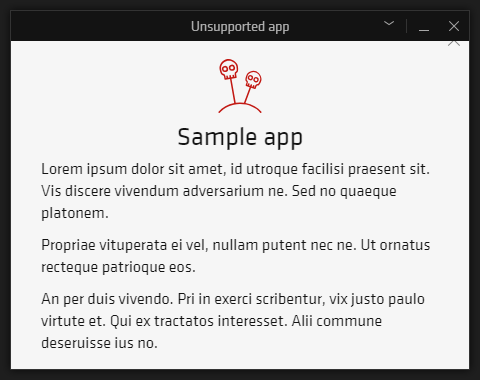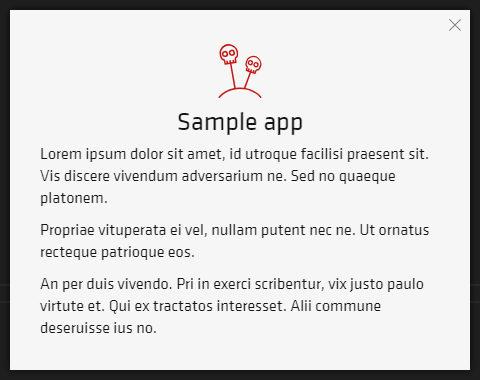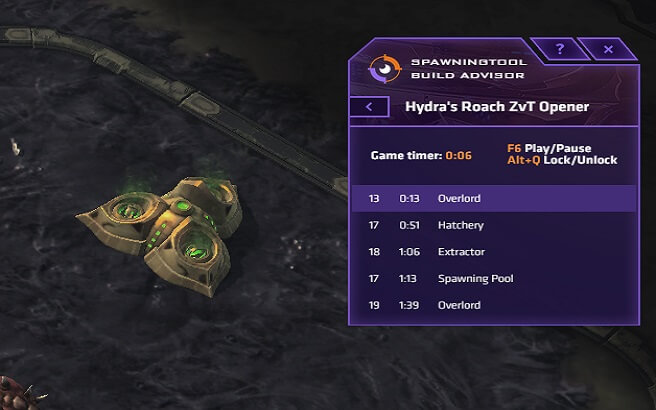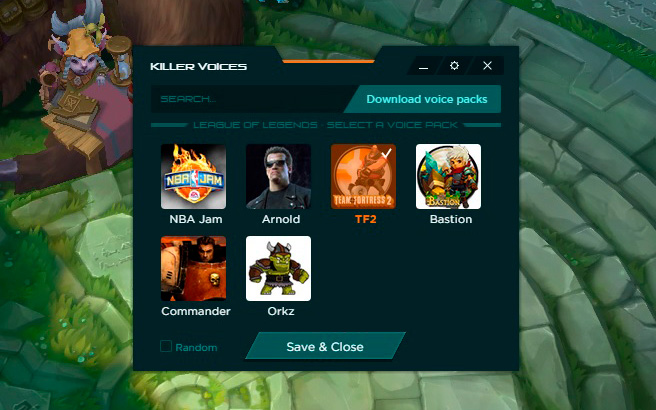Windows Types
Behavior is different depending on window type, and we're going to go over two main types of Overwolf app windows: Transparent vs. Non-Transparent Windows.
Non-Transparent Window
A non-Transparent Window is the standard Overwolf window. A window with borders, control buttons and opacity slider.
- Any part of your window that has a transparent background ("background: transparent;") will become white.
Example from the manifest.json:
- In order to create this window you should set the transparent property in your manifest.json to 'false'.
- In order to enable a maximize / minimize buttons, you should set the right flags in the manifest to "true".
"windows": {
"windowName": {
"file": "name.html",
"transparent": false,
"show_maximize": true, //only relevant for non-transparent windows
"show_minimize": true //only relevant for non-transparent windows
}
}
Example for a standard, non-transparent window:
!
Transparent window
The term transparent might be a bit misleading. This window has no borders, window control buttons or default background – create those elements by yourself in your HTML/CSS.
A Transparent Window is a window without borders, control buttons and opacity slider.
- Any part of your window that has a transparent background ("background: transparent;") will become a see-through area that blends with the game or desktop behind it.
- You should implement the window header with the control elements (like maximize, minimize) independently, by yourself in the HTML/CSS. (you can use our UI components samples)
- You should implement dragging behavior independently, by yourself. (you can use our sample app that already implemented this feature)
- Avoid full-screen transparent windows. More info here.
Example from the manifest.json:
- In order to create this window you should set the transparent property in your manifest.json to 'true'.
"windows": {
"windowName": {
"file": "name.html",
"transparent": true
}
}
Here you can see some examples for transparent windows:
Native window
If your app includes a window that will only be visible on desktop, either before, after or on a 2nd screen during game (desktop_only:true), you should define this window as a "native".
It will dramatically improve your app performance and help design an efficient, elegant product.
- A native window is always a non-transparent window.
- Any part of your window that has a transparent background ("background: transparent;") will become black.
- You should implement the window header with the control elements (like maximize, minimize) independently, by yourself in the HTML/CSS. (you can use our UI components samples)
- Native windows change their size according to the users' DPI automagically. (to disable that use the disable_auto_dpi_sizing flag)
- On native window,
window.screenreturns the dimensions of the desktop with calculating DPI. (on non-native window, it returns without calculating DPI)
Example from the manifest.json:
add the following flags to that window's data in the app’s manifest.json file:
"desktop_only": true,
"native_window":true,
Comparison table
To summarize, these are the main differences between the transparent, non-transparent, and native windows:
| Feature | transparent | non-transparent | native |
|---|---|---|---|
| desktop_only support | + | + | + |
| in_game_only support | + | + | - |
| built-in controls (maximize,minimize) | - | + | - |
| built-in dragging | - | + | - |
| built-in resizing | + | + | + |
| See-through background | + | - (white bg) | - (black bg) |
| DPI-Aware mechanic | - | - | + |
Sample app
You should download our sample app, it covers transparent/non-transparent window creation and much more.


